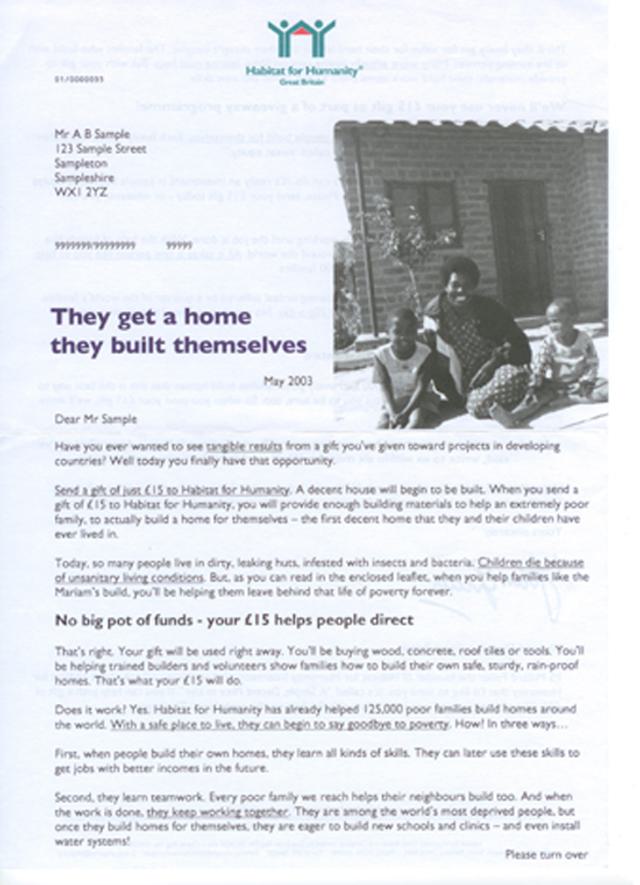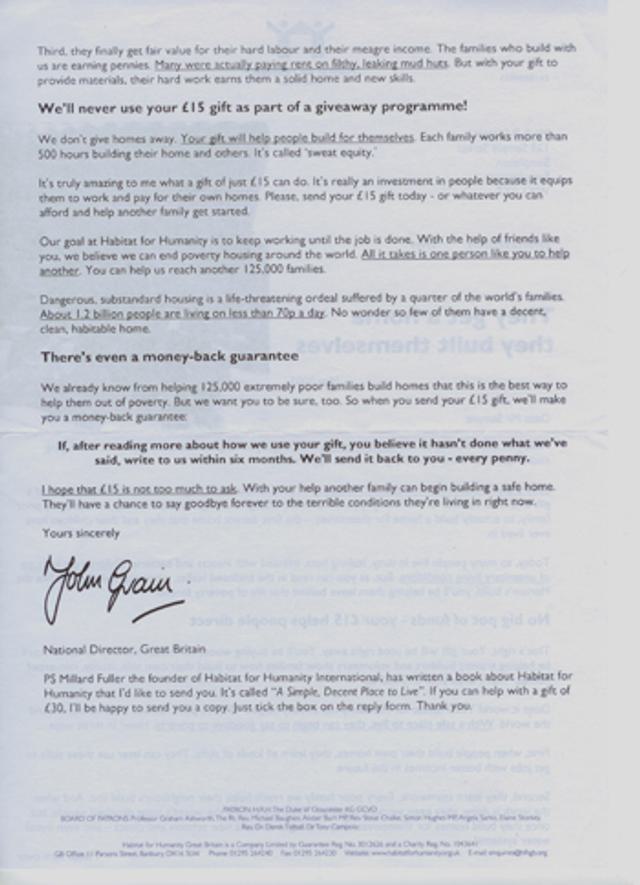Habitat for Humanity: money back guarantee
- Exhibited by
- John Grain
- Added
- September 06, 2009
- Medium of Communication
- Direct mail.
- Target Audience
- Individuals, planned gift, regular gift.
- Type of Charity
- Poverty/social justice, public/society benefit.
- Country of Origin
- UK.
- Date of first appearance
- 2006
SOFII’s view
Offering money-back guarantees is common practice among commercial organisations, for good reasons. Nonprofits sometimes imagine that they can't make similar offers because they are not selling a tangible good. But nonprofits do offer a distinct service and if donors are unhappy with any part of that, they should be able to ask for their money back. For a relatively unknown organisation, this offer makes real sense. HHGB again shows that simple ideas usually work well.
Creator / originator
John Grain and Barry Floyd at Habitat for Humanity Great Britain.
Summary / objectives
The concept was simple. To offer a 'no quibble money-back guarantee' on our acquisition mailings to try and build trust and credibility with new donors – particularly as we (Habitat for Humanity Great Britain) had a weak brand and no public profile at the time. The offer stated that if donors did not feel we had spent their money wisely and informed them about it in an appropriate way, they could claim the value of their donation back any time within six months of making the gift.
Background
The idea came from seeing a book in an airport by a new author with a cover sticker saying 'As good as Stephen King or your money back'. I felt there was a similarity in the objectives of publishers getting people to try a new, unknown author and charities getting people to give to a new, unknown cause.
Test details
HHGB split tested nearly identical packs (the only difference being one carrying a 'Money back guarantee' sticker and supporting leaflet and one a standard proposition led pack) across 'identical' list segments.
Cost
The cost was what would be considered standard agency charges in the UK for development of new acquisition pack and split testing to 200,000 names.
Results
Response rates were virtually identical (1.15% compared with 1.13%), but the success was in the average gift levels. Without the guarantee the average gift was £22.40, with the guarantee the average gift was over 50% higher at £34.80. Good stewardship ensured (as of time of JG's involvement) HFHGB were never asked for a refund.
Why do you think this exhibit merits a place in SOFII?
Because donor acquisition is the most expensive and arguably the most difficult area of individual giving. This idea consistently proved for HFHGB that a guarantee of this kind could increase giving levels without depressing response and build trust and credibility with new donors from an early stage.
Other relevant information
Apparently (so we are told), Friends of the Earth had also used this idea for a number of years in the 1990s, but it had been lost during staff turnover! (Editor's note: To avoid this problem always keep a proper guard book in which to record details of all promotions and their results.
 View original image
View original image
 View original image
View original image

Also in Categories
-
- Individual donors
















